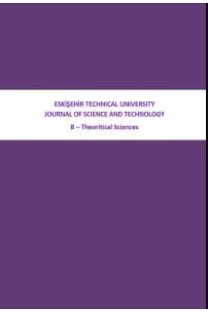THE IMPORTANCE OF THE DATA TAKEN FROM THE NO, NO2, AND CO SENSORS IN THE VENTILATION PROCESS IN THE RAILWAY TUNNELS
In railway tunnels, ventilation is carried out to prevent NO, NO2, and CO gas pollution caused by exhaust gases due to the diesel locomotives on the railway. Some ventilation calculations are used during ventilation. In these calculations, factors like the location and the structure of the tunnel and the pressure belts that may occur should be considered one by one. After these calculations, control scenarios are prepared based on the locations and dimensions of the ventilation equipment to be used. Programmable logic controllers (PLC) control these control scenarios. In this system, data is needed for the devices to work efficiently and correctly. These data are obtained in real-time through sensors. These are NO, NO2, and CO sensors that measure toxic gases. The information received from the sensors provides the necessary information to start, continue, stop or switch to other scenarios. These sensors are needed to provide data required to operate jet fans and axial fans to ventilate the tunnels. This article describes the location of sensors and programmable logic controllers in the ventilation process in railway tunnels.
THE IMPORTANCE OF THE DATA TAKEN FROM THE NO, NO2, AND CO SENSORS IN THE VENTILATION PROCESS IN THE RAILWAY TUNNELS
In railway tunnels, ventilation is carried out to prevent NO, NO2, and CO gas pollution caused by exhaust gases due to the diesel locomotives on the railway. Some ventilation calculations are used during ventilation. In these calculations, factors like the location and the structure of the tunnel and the pressure belts that may occur should be considered one by one. After these calculations, control scenarios are prepared based on the locations and dimensions of the ventilation equipment to be used. Programmable logic controllers (PLC) control these control scenarios. In this system, data is needed for the devices to work efficiently and correctly. These data are obtained in real-time through sensors. These are NO, NO2, and CO sensors that measure toxic gases. The information received from the sensors provides the necessary information to start, continue, stop or switch to other scenarios. These sensors are needed to provide data required to operate jet fans and axial fans to ventilate the tunnels. This article describes the location of sensors and programmable logic controllers in the ventilation process in railway tunnels.
___
- [1] Northern Railway, Udhampur-Srinagar-Baramulla- Rail Line Project, Tunnel T-14&T-15 + T-40/41, Ventilation Design Report, 2021.
- [2] PIARC Committee on Road Tunnel Operation (C-5), Tunnel Classification, 1995.
- [3] PIARC Committee on Road Tunnel Operation (C-5), Route/Roads, PIARC Proposal on Design Criteria for Resistance to Fire for Road Tunnel Structures, 2003.
- [4] Northern Railway, Udhampur-Srinagar-Baramulla- Rail Line Project, Tunnel T-14&T-15 + T-40/41, Tunnel Sensors Design Report, 2021.
- [5] Udhampur Srinagar Baramulla Rail Link Project, Automation System Design Report, 2020.
